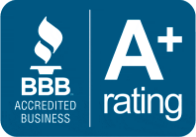Keeping up with employment law can be a daunting and somewhat confounding task for employers. One area that has seen significant changes is “pay equity.” As of January 1, 2019, Oregon businesses, non-profits, and governmental entities are subject to additional pay equity requirements.
The law originally focused on ensuring pay equity protections for the single protected status of “sex.” The law has now expanded pay equity protections to include race, color, religion, sexual orientation, national origin, marital status, disability, age, and veteran status in addition to sex.
In essence, employers cannot pay different employees different compensation when they perform “work of comparable character,” or in layperson’s terms, “doing the same job.” Compensation differences are allowed if based on seniority, merit, a system that measures the quality or quantity of work, work location, travel, training or experience. Each of these terms have specific requirements that must be complied with to justify a difference in pay.
Employers are also now prohibited from seeking an applicant’s salary history and even an employee’s salary history in many instances. Further, employers are prohibited from reducing the compensation of any employees to comply with the law.
The Bureau of Labor and Industry (BOLI) has also weighed in with additional and more specific rules. One such rule states that even if a job applicant discloses his or her past or current compensation to an employer during the application process, that employer may not consider it when filling a position.
In light of all of these new requirements and rules, employers should complete a review of policies and procedures to confirm they comply with the new law and BOLI’s rules. Employers should also consider taking additional steps to evaluate their pay structure, including performing a pay equity analysis, updating job descriptions to include actual job duties, developing a framework to determine how pay decisions are made, updating interview and hiring processes, and updating handbooks and policies. The new law also requires that employers post a notice regarding Oregon’s Equal Pay Law. BOLI has provided a form template that you can use: https://www.oregon.gov/boli/TA/docs/Equal_Pay_Poster.pdf
Employers should carefully consider the law and the new rules when determining employee compensation and making hiring decisions. Compliance with the law and BOLI’s rules is not easy. The law and rules are complicated, and this is only a summary. If you have questions regarding compliance, please contact BLJ’s employment law attorneys, Heather J. Hansen and Jeremy M. Green.
This summary is prepared for informational purposes only and does not constitute legal advice. It is also not a full analysis, and each person, organization, or other entity should contact his, her, or its legal advisor for a complete analysis of all applicable rules and regulations.
Article by Brent Wilkins

